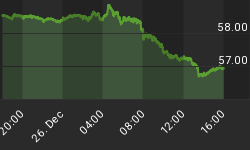I have another paper available for download outlining my China short thesis available for subscribers here: ![]() China Macro Discussion 2-4-10 2010-02-04 13:10:26 922.25 Kb.
China Macro Discussion 2-4-10 2010-02-04 13:10:26 922.25 Kb.
In addition to the issue-specific ETFs (proffered (Chinese ETFs with Exposure to Real Estate, Banks, Insurance and Export Industrials) that I have already proferred, I will be offering my viewpoints on specific companies across various geographic regions as well. Those ETF's have actually performed quite well on the short side YTD. For those who don't subscribe to my blog, here are some excerpts from the 11 page download:
Can China Control the "Side-Effects" of its Stimulus-Led Growth?
The strongest argument for a Yuan-revaluation relies on a basic tenet of economics: tinkle with prices and you disturb the resource allocation equilibrium prevailing in the economy. China's endeavor to push economic growth through stimulus spending and its lax control over money supply has started to affect the "side effect" - INFLATION. The very contrivance used to maintain stability has become a threat to economic resurgence. And if there is one such thing that could force China to drop its dollar peg, it is out-of-control inflation.

One of the major reasons for inflation in China is the rescue program initiated during the recent global slowdown. The Stimulus program aimed at creating a temporary demand within the economy has apparently worked wonders - aiding the Chinese economy to grow by a healthy 9% in 2009. This program has apparently overheated the economy, gorging on what may become untamed GDP growth, currently 10.7% in 4Q09 - its fastest quarterly growth in two years - which was uncannily higher compared to the 6.1% growth in 1Q09, the lowest since the introduction of quarterly GDP figures in the fourth quarter of 1999.

On a real basis, China's equity markets closely track GDP. I would venture that a pullback of government stimulus and/or a spike in inflation or currency values will put the skids on export driven and financial equities. Let's explore this thesis...

The unprecedented stimulus (as a % of GDP) has given rise to what I would consider an uncontrolled frenzy of economic activities, resulting in excess money supply within the economy while keeping the domestic supply of goods and services relatively constant in the short term. Though the growth rate may not be a concern and may even be maintained at the optimum level, demand, especially from consumers and investors will inevitably increase over a period of time driven mainly by the significant amount of domestic liquidity in the economy which also poses a risk of increasing prices. Money generally chases assets that provide the highest returns causing a stress on several such assets to the point of demand pull inflation or in other words, unwanted asset bubbles.

According to a report issued by the People's Bank of China, the nation's commercial lenders pumped out RMB 9.59 trillion (US$1.4 trillion) in credit in 2009, almost double that of the previous year. China's Yuan-denominated individual home mortgage lending rose 47.9% from the previous year, to RMB 1.4 trillion ($204.98 billion) in 2009. Meanwhile, the Yuan-denominated property development lending gained RMB 576.4 billion in 2009, up 30.7% y-o-y. The total mid-term and long-term loans in foreign and domestic currency increased by RMB 7.1 trillion in 2009, up 43.5% from the previous year, and the growth rate was 23.4 percentage points more than the previous year.
These liberal credit policies adopted by China over the past four to six quarters have flushed the economy with excess money supply. The current rate of production has not been able to cope with the rate of the increase in demand for these goods and services creating a scenario where excess money has been chasing limited goods and services, leading to excessive inflationary pressures.
Further, easy availability of funds have rapidly increased the demand (investment) in real estate. As mentioned earlier, real estate is considered a high return asset, which attracts money. The result: home prices in 70 major Chinese cities jumped 7.8% on average in December 2009 when compared with December 2008 - the steepest climb in the past 17 months.
Growing foreign reserves and trade surplus
Another key factor that has continuously driven the money supply is the growing foreign exchange reserve which in turn is driven by foreign trade surplus, foreign direct investment and "hot money inflows". At the end of 2009, China's outstanding foreign exchange reserves reached USD 2.4 trillion, soaring 23.28% or USD 453.1 billion y-o-y. Moreover, as per industry observers out of the total increase of USD 453.1 billion, the annual increment of about USD 167 billion is over and above the sum of the country's foreign trade surplus and foreign direct investments. Of this USD 167 billion, it is estimated that at least USD 100 billion relates to hot money, which is a concern for the economy as growing hot money inflows are propagating an asset bubble, which if left uncontrolled could burst upon the inevitable hot money rush to the exit.
















